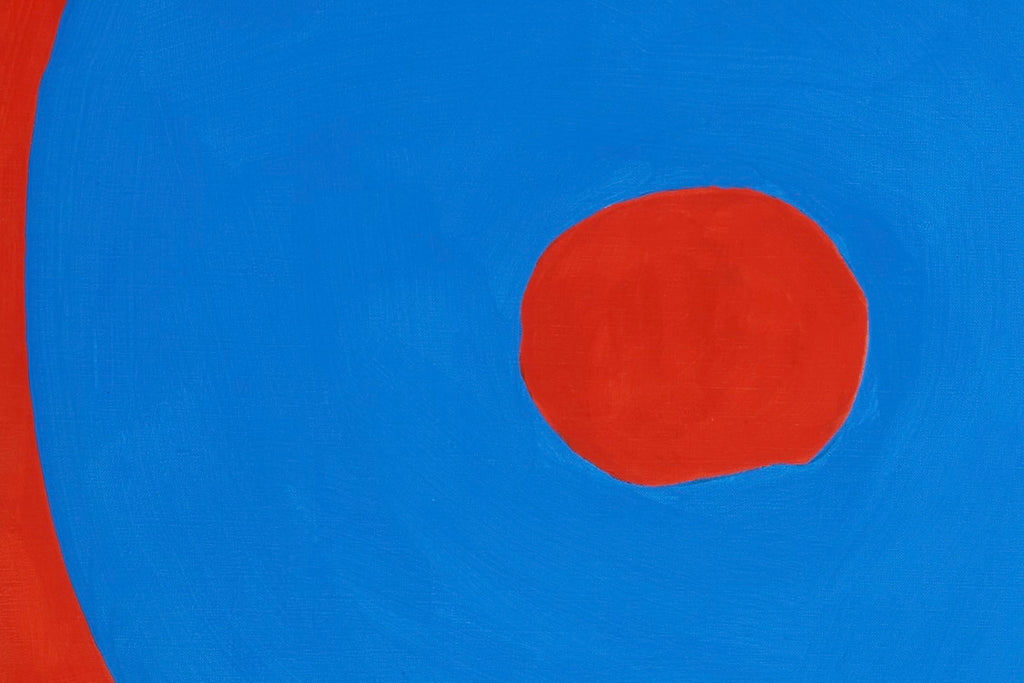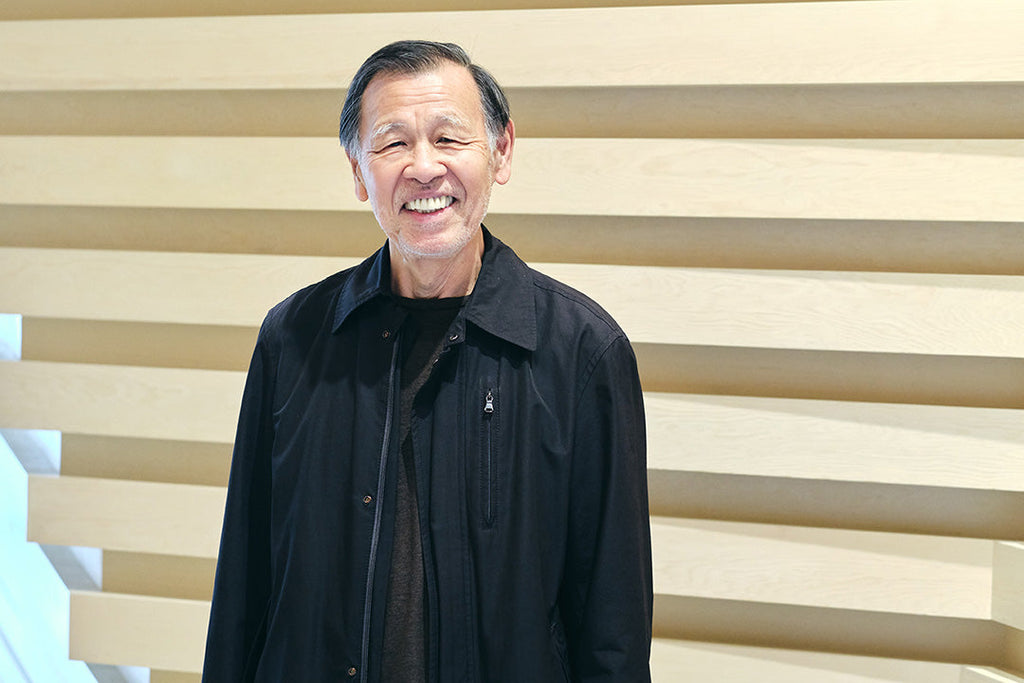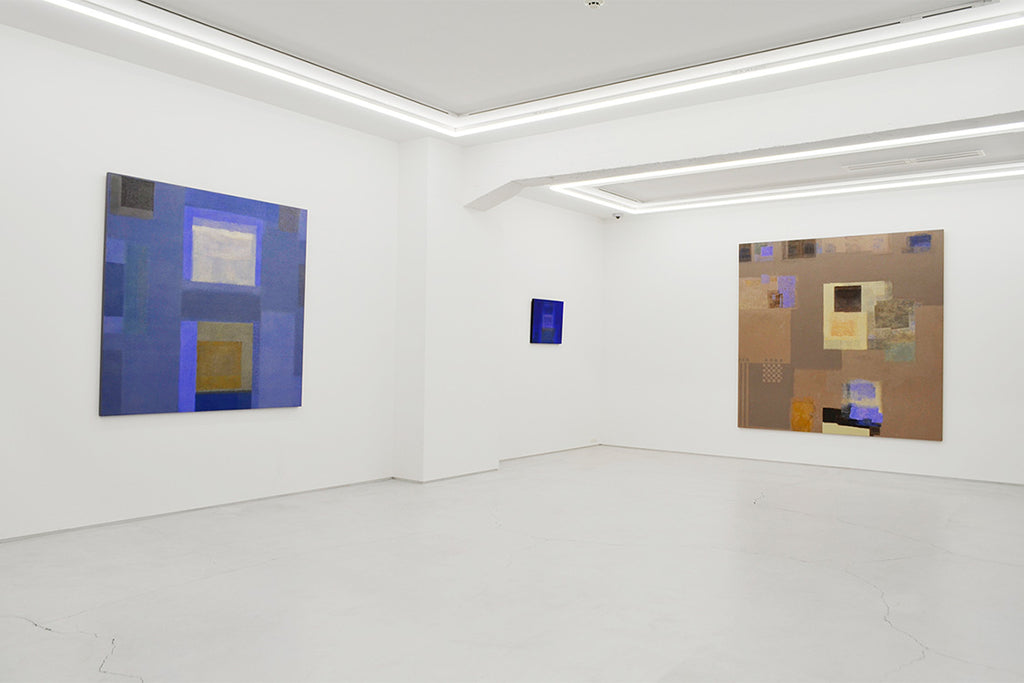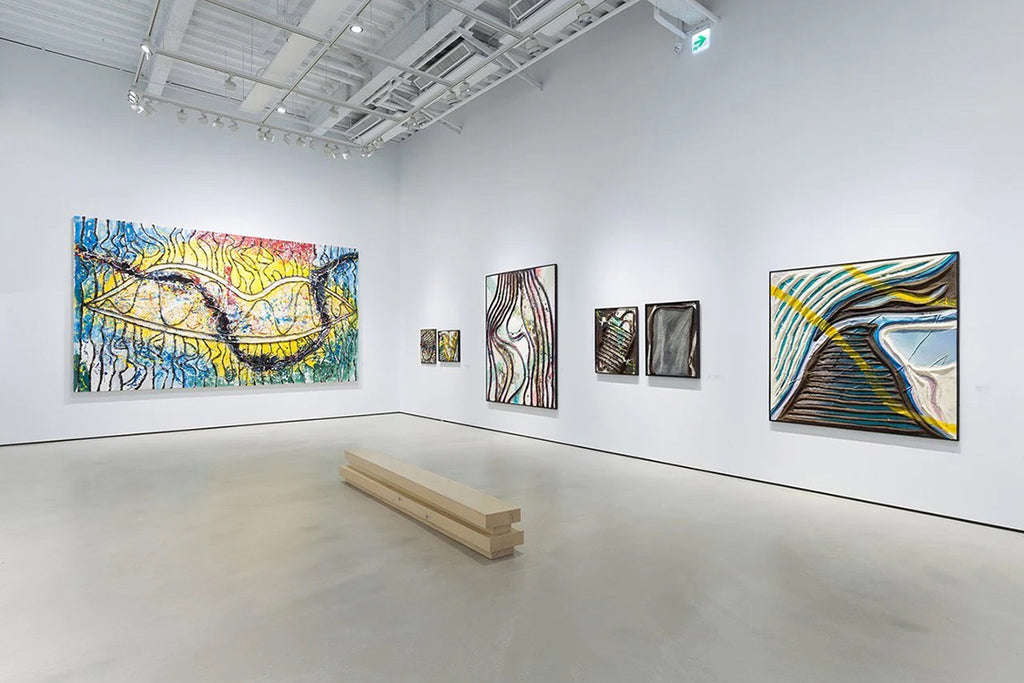ARTICLES
Mizú Blue and Joseon Porcelain
A New Appreciation Contemporary Japanese and Asian Art
7/23

Installation image, 2017, Taipei
In our ongoing series, we present the digital archive of the book 'A New Appreciation Contemporary Japanese and Asian Art' This book delves into internationally acclaimed artists and the dynamics of the Asian art market. The seventh installment introduces Tetsuo Mizù.
Mizú Blue and Joseon Porcelain
Haruki Sato
Director/Owner Gallery Cocon
The allure of Joseon porcelain ware is difficult to describe. Its white tones are myriad and of infinite depth and elegance. Similarly, Mizú’s ‘blue’ is anything but singular. For him, what we generally identify as black is actually blue. The color of Lake Tazawa, if objectified, for example, could be described emotionally as ‘Japan blue.’ A viewer is free to associate at will. Mizú blue and Joseon porcelain, though vastly separated by time and space, have in common an endless appeal and underlying pathos.
With his matted hair and shaggy beard, Tetsuo Mizú looks alternatively like an underclass rustic or an eccentric French gentleman. Constitutionally, he is open-minded and ever attentive to detail. Mizú is a free spirit whose charm is broadly alluring.
The color blue occupies an important position as foundation of Mizú’s Flag series1. Many possibilities are surely yet to emerge from this series. Transforming meaning (words) into art (symbols) is in itself an accomplishment but does not necessarily translate into art. It is the combination of Mizú’s craftsmanship and sensibility that creates a work of art. Though thinly painted, Mizú’s works nevertheless convey a rich materiality and dignity. The more paintings he produced in this series, the more sophisticated they became. The structure of combining flag details irrespective of conventional flag meaning representation is a contributing factor. Mizú’s selective inclusion of elements makes it impossible to discern what is from where, even with a conversion table. This is already evident in early examples from the series although Mizú constructed those intuitively while his later paintings are more deliberate. A more unconstrained, and perhaps more difficult, direction resulted in more masterful painting.
Mizú can be expected from now to produce less controlled signature pieces along with his Flag series. It is interesting to imagine how Mizú’s work might have developed had he continued to concentrate on the innovative semi-figurative works he produced in the 1970s and 1980s. It may be wishful thinking to imagine that Mizú, now in his 70s, might again create semi-figurative paintings.
A viewer’s perspective can influence how Mizú’s paintings appear. It is best to view Mizú’s paintings with as neutral, or vacant, a state of mind as possible. Depending on one’s mood, the same painting might appear subtly or completely different. Just as an answer might differ depending on how a question is asked, the experience of some types of art differs from time to time. Such art may be initially difficult to grasp, but one will never tire of new discoveries over time.
An outstanding artist (producer) is also generally an excellent observer (viewer). In other words, it is the artist who truly understands his own work. This is definitely true for Mizú who can declare at an early stage whether or not a work will turn out well. It is extraordinary to be able to envision the completed painting when the brush is first put to canvas but, as an admirer of Mizú, I hope that he will go on creating more of such paintings.
“Less is more” and “God is in the details,” two observations by architect and Barcelona Chair designer Mies van der Rohe, offer us a key principle for interfacing with art.

Portrait photo of Tetsuo Mizu
Haruki Sato
Born in Tokyo in 1951. Currently in private practice (internal medicine, psychosomatic medicine) in Tokyo. His interest in contemporary art started when he was in his late 20s. He visited mainly rental galleries in the 1980s. In 1991 he published something else 1 about his personal collection and view on art. Opened Gallery Cocon in 2009 with the concept of juxtaposing contemporary and old works of art (mainly Buddhist art) and antique ceramics. The gallery produces exhibitions of new works and its permanent collection, and has presented solo exhibitions of Kishio Suga, Mitsunori Kurashige, Wakiro Sumi, Tetsuo Mizú and others. A sequel to something else 1 is forthcoming.
Book Information
Title: A New Appreciation Contemporary Japanese and Asian Art (English Edition)
Publisher : Whitestone Co., Ltd.
Release Date : February 26, 2020
*Information in this article is at the time of publication.
1The Flag series is based on universally standardized international maritime signal flags used for communication at sea. Mizú has created a large number of works in this idiom since beginning the series in 1987. This is not necessarily because of simplicity of the color, line, and surface construction.
ARTIST
RELATED ARTICLES
-

Life in New York as an Artist: Harmony of Art, People, and Space
A New Appreciation Contemporary Japanese and Asian Art
23/23 -

Discovering the Essence of Art: Renowned American Artist, Tadaaki Kuwayama
A New Appreciation Contemporary Japanese and Asian Art
22/23 -

Painting that Does Not Resemble to Anyone Else’s Expression that Reaches the Deepest Layer of the Heart
A New Appreciation Contemporary Japanese and Asian Art
21/23 -

Being Gutai Is All About Myself
A New Appreciation Contemporary Japanese and Asian Art
20/23



